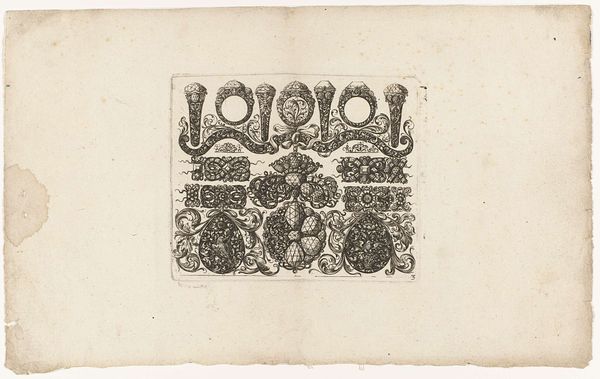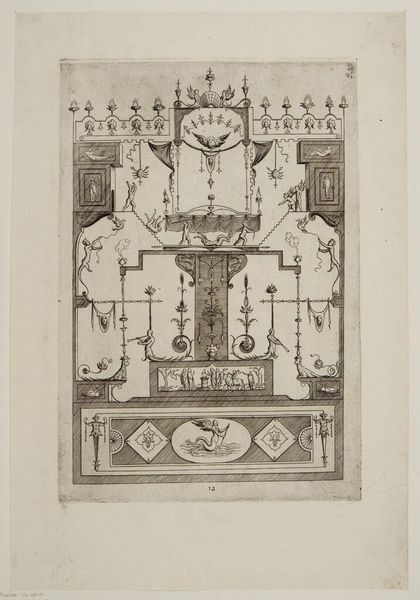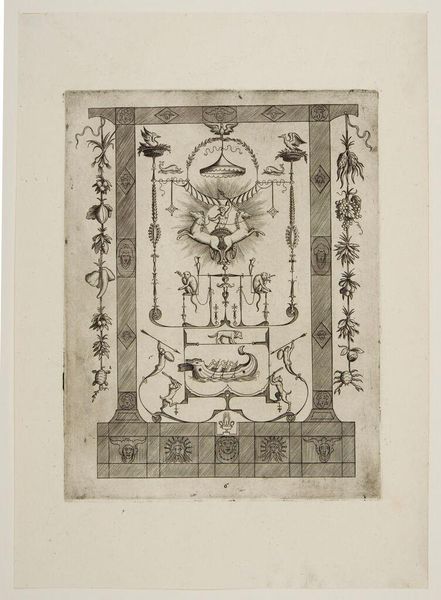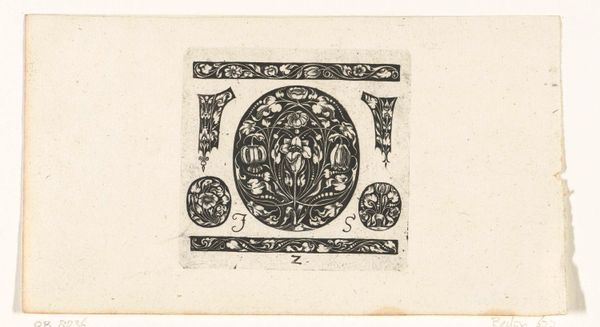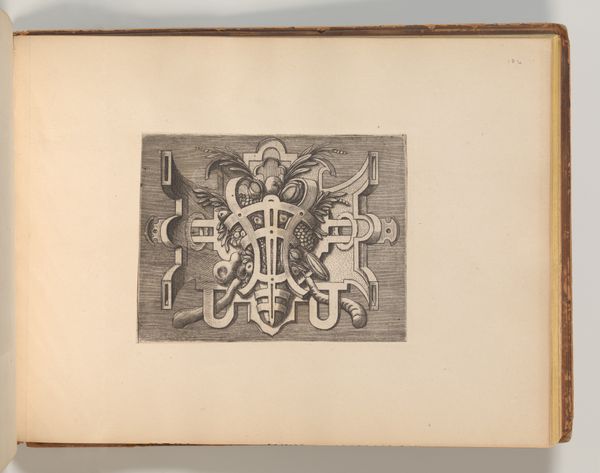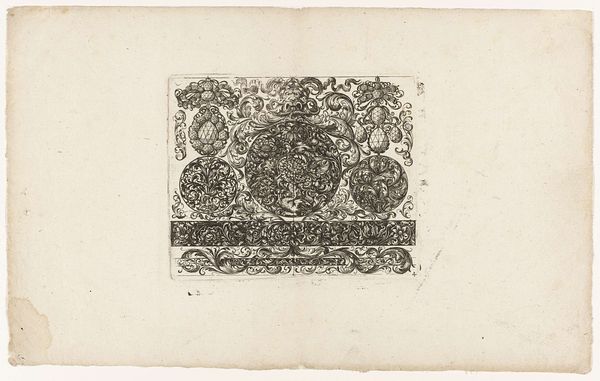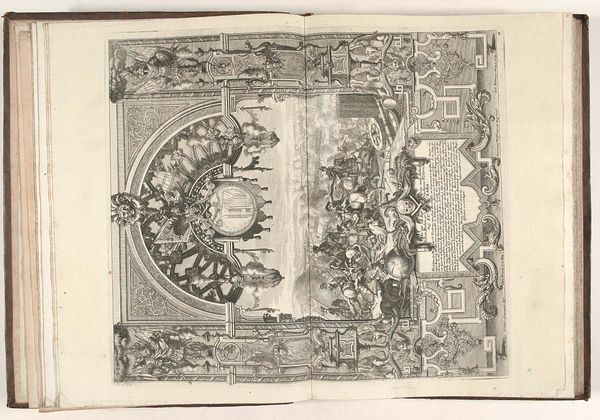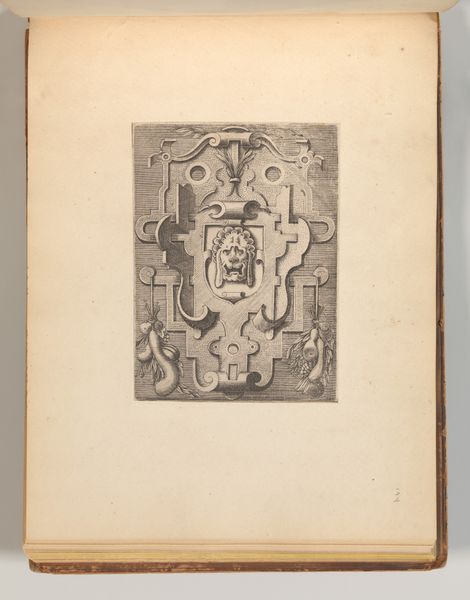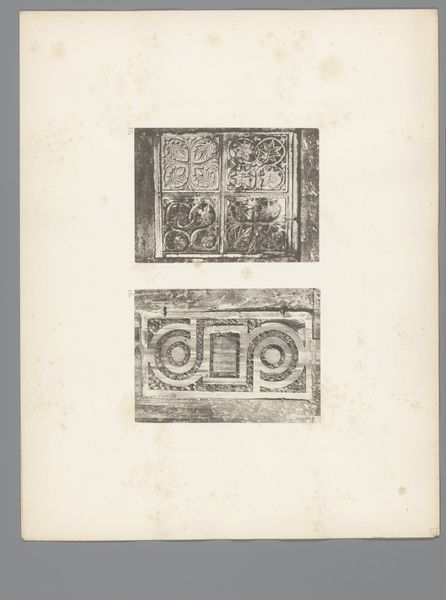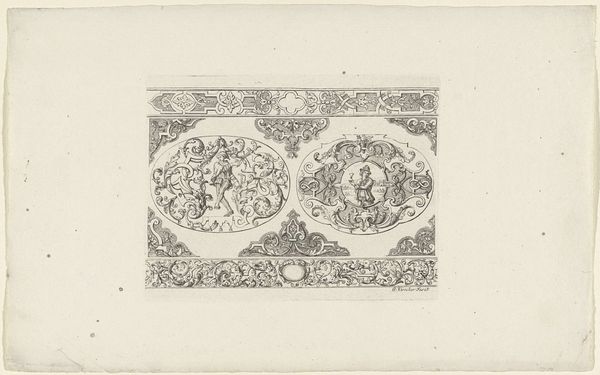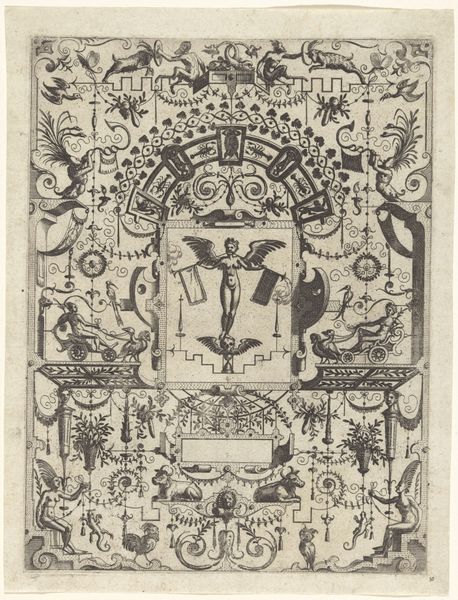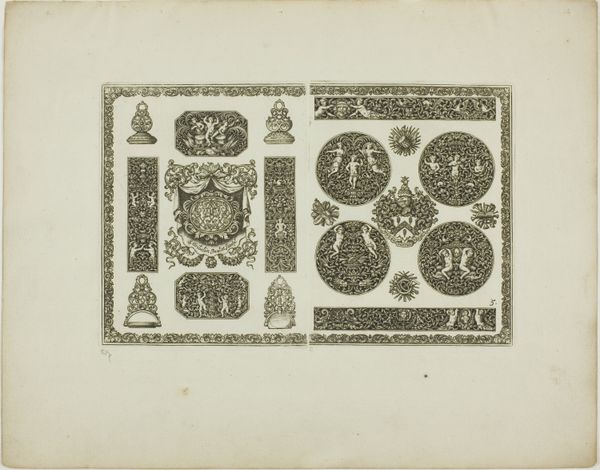
drawing, print, ink, engraving
#
drawing
#
baroque
# print
#
ink
#
geometric
#
decorative-art
#
engraving
Dimensions: height 115 mm, width 139 mm
Copyright: Rijks Museum: Open Domain
This is a 17th-century print by Johann Wilhelm Heel, which presents a range of jewelry designs. The technique used here is etching. The design is drawn into a wax ground on a metal plate, which is then dipped in acid. This eats away at the exposed metal, allowing for a fine level of detail, as we can clearly see in the filigree decoration. Prints like this were not artworks in themselves, but rather served as pattern books for goldsmiths and other artisans. The crosses, in particular, would have been produced in multiples, to be sold on to Christian pilgrims. These designs are strongly ornamental, yet their materiality mattered just as much as their aesthetics. The etching process allowed for the efficient reproduction of elaborate forms, making luxury items more accessible. And the resulting jewelry would have in turn signified the wealth and status of the wearer. So, this seemingly straightforward print speaks to the complex relationship between design, production, and social value.
Comments
No comments
Be the first to comment and join the conversation on the ultimate creative platform.
